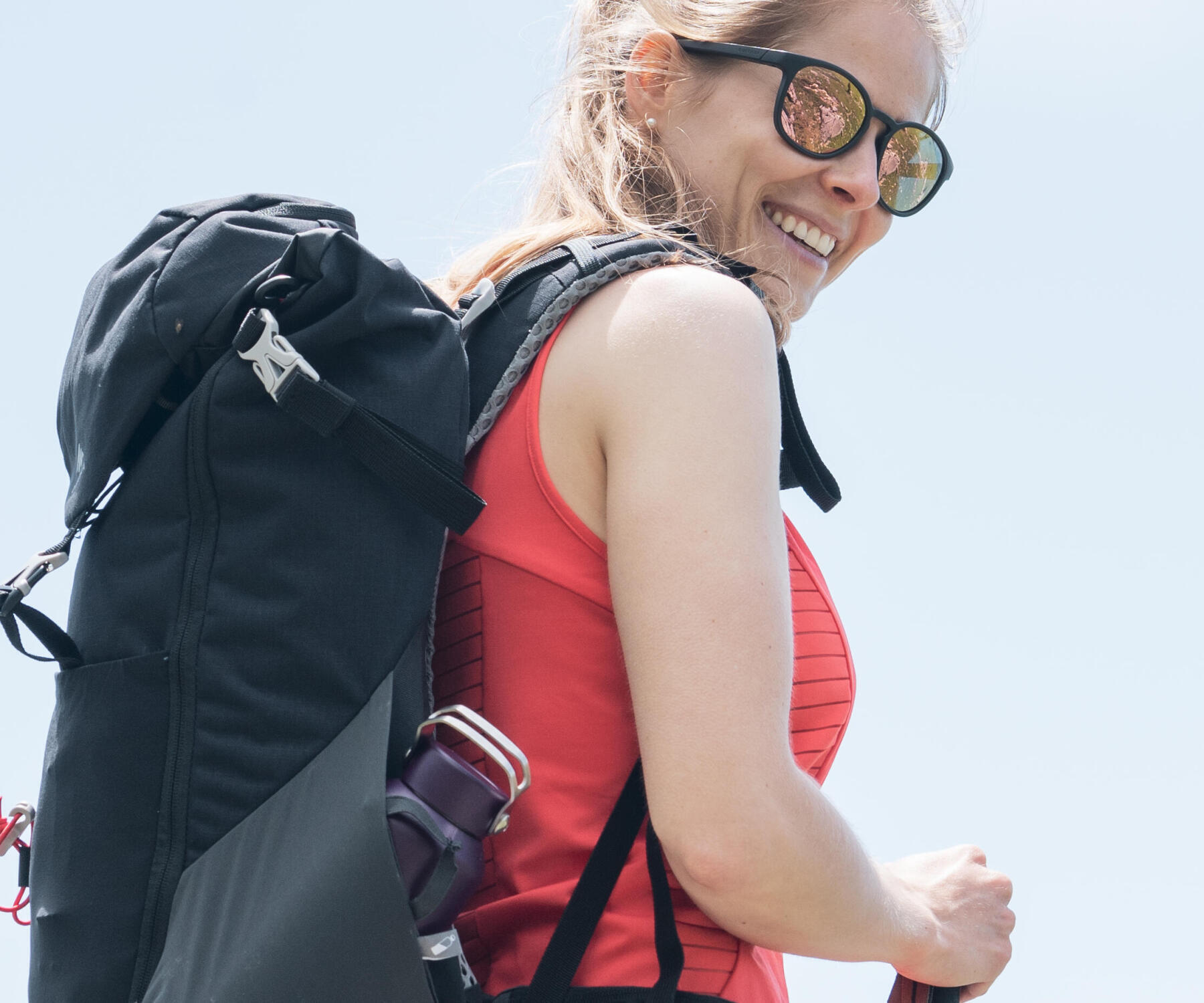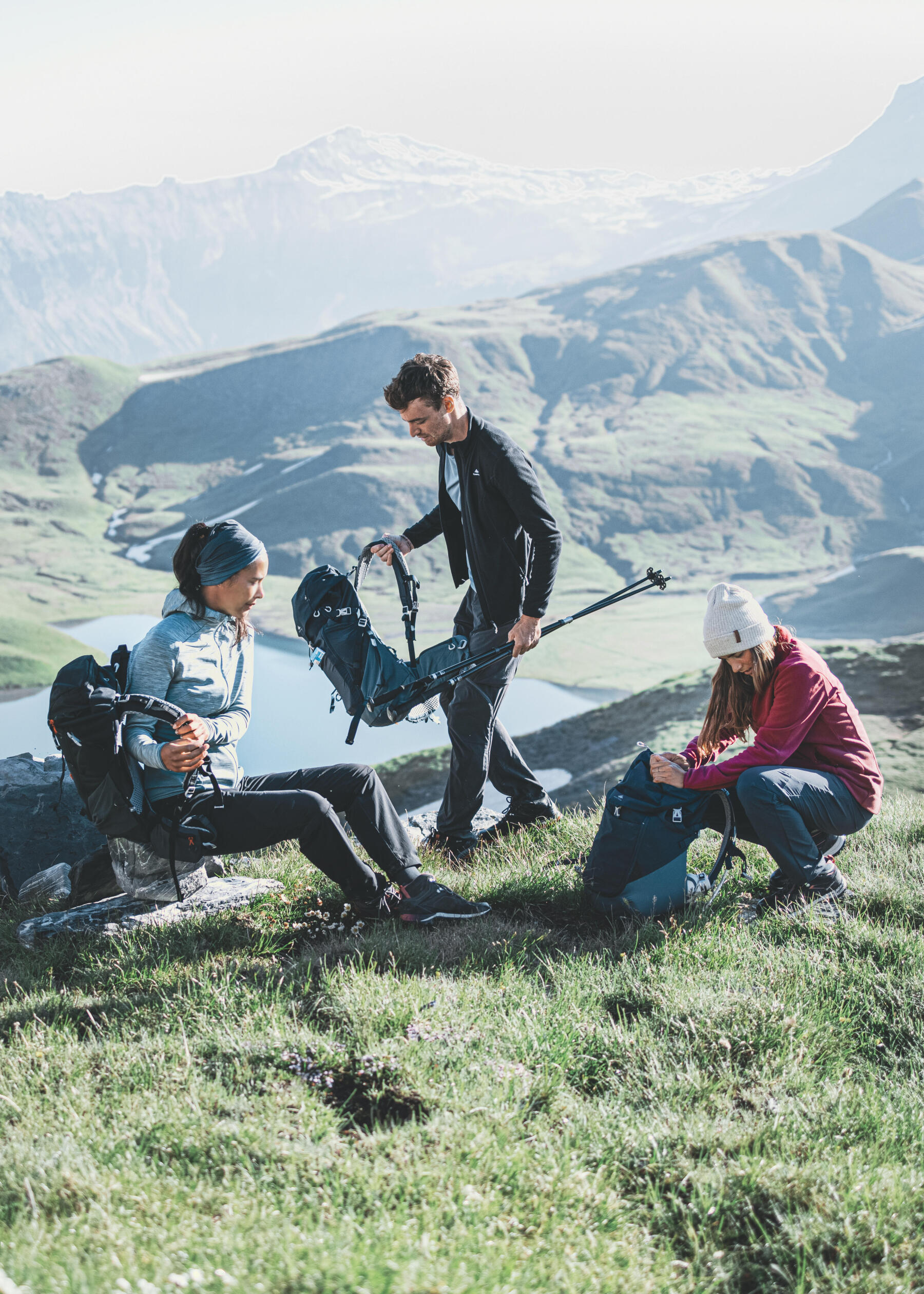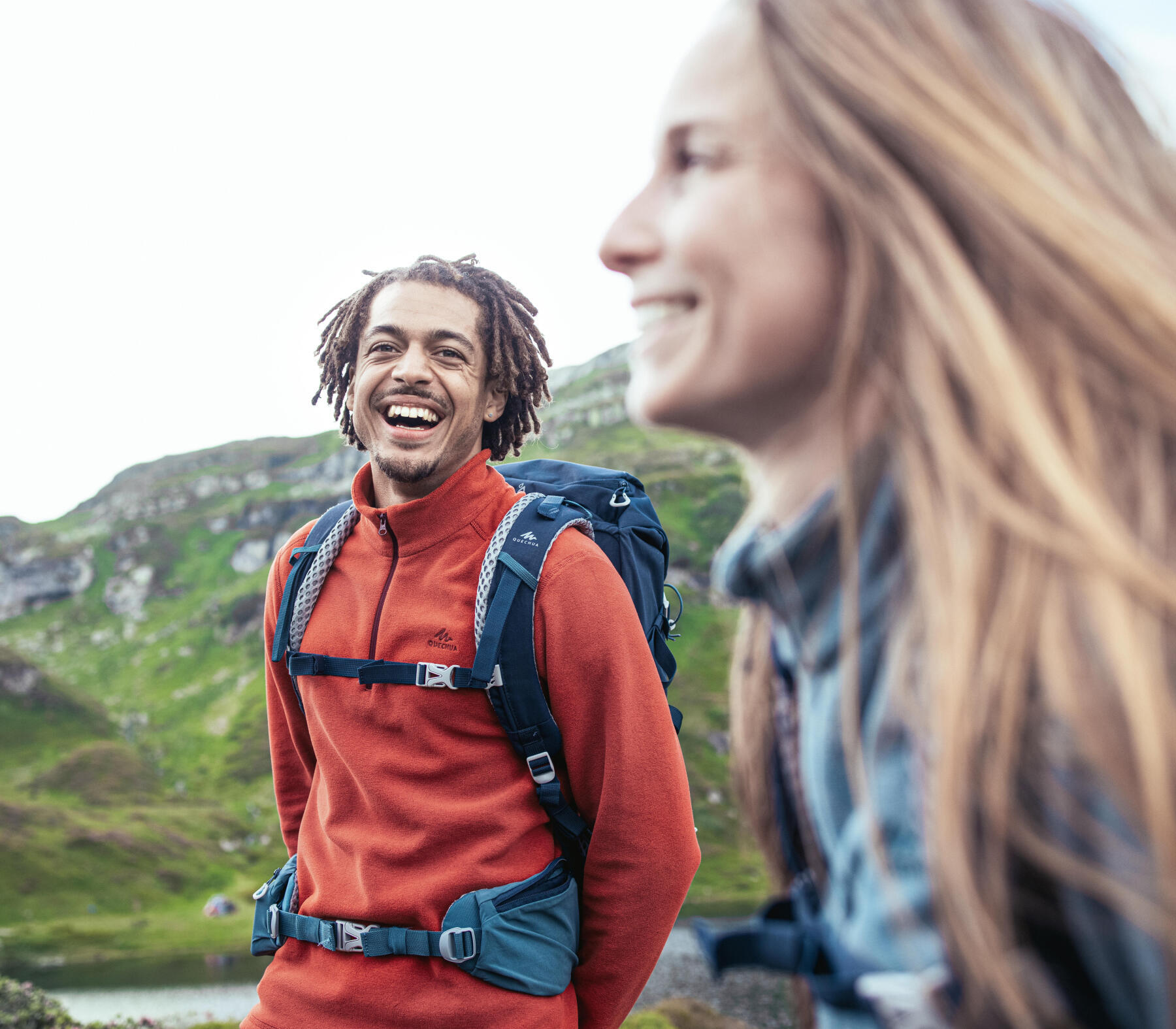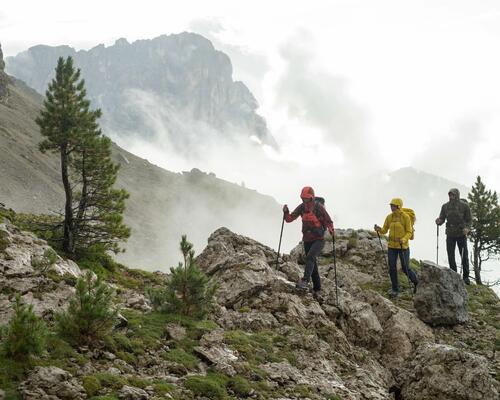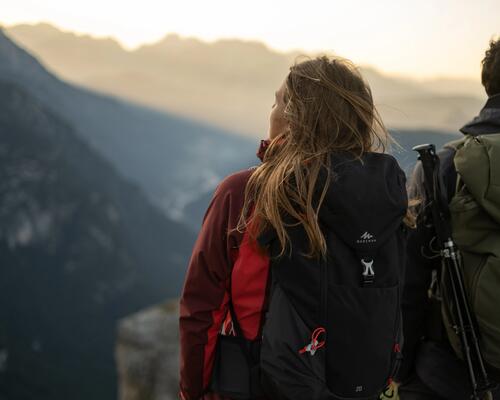How to adapt your hiking outfit
Obviously, the 3-layer technique needs to be adapted to the conditions and intensity of your activity.
In many cases, you will not use 3 layers of clothing to tackle your hike.
Sometimes you will have more, sometimes less.
It goes without saying that you must respect the order of the layers: It won't work if you put a t-shirt over your fleece😀!
However, it is perfectly possible to add more layers between the first and third layer, especially if it is very cold.
If you want to add layers, do so only for this middle layer.
Because stacking up first layers such as T-shirts or third layers such as jackets will only make you sweat.
And sometimes, you can just use two elements of the 3-layer technique. For example: if you are hiking in autumn and the wind is blowing hard, but it is not very cold: You can just combine a T-shirt (first layer) and a hiking jacket (third layer).
This way, you won't be too hot or too cold and your sweat will still be wicked away.
Another example: if you’re hiking in winter, it can be sunny and cold, but not windy.
Then you can simply put on a first layer with one (or more) second layers.
This will keep you warm and comfortable while ensuring that your perspiration is properly wicked away.

